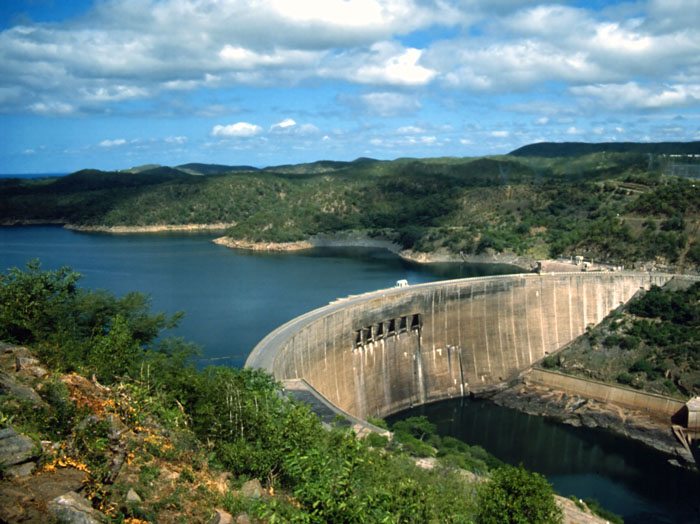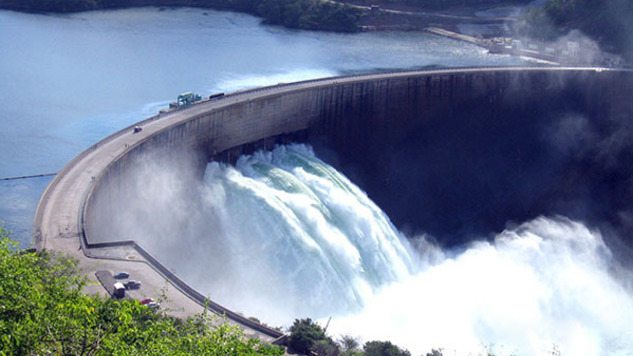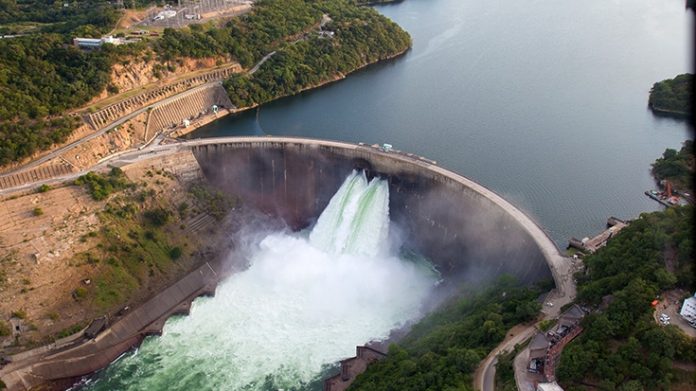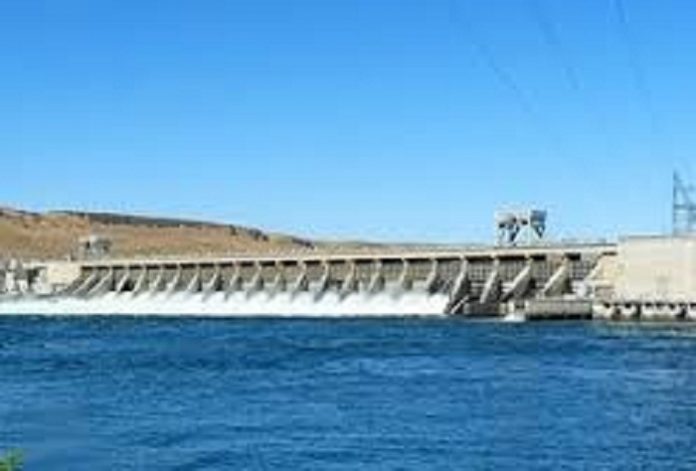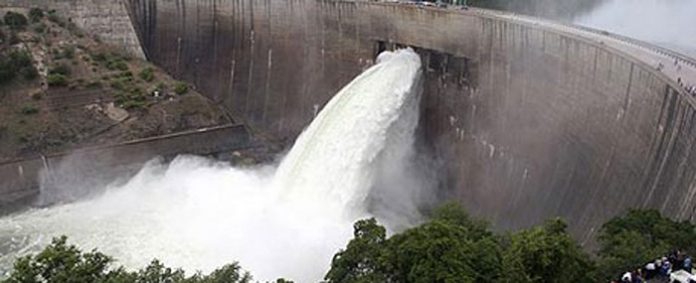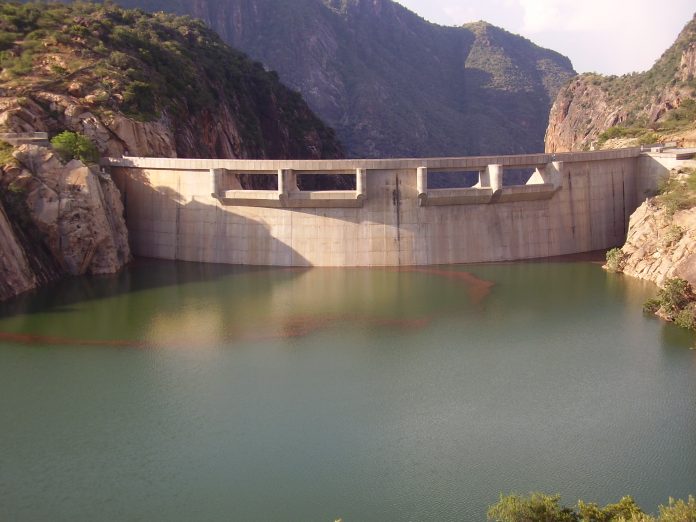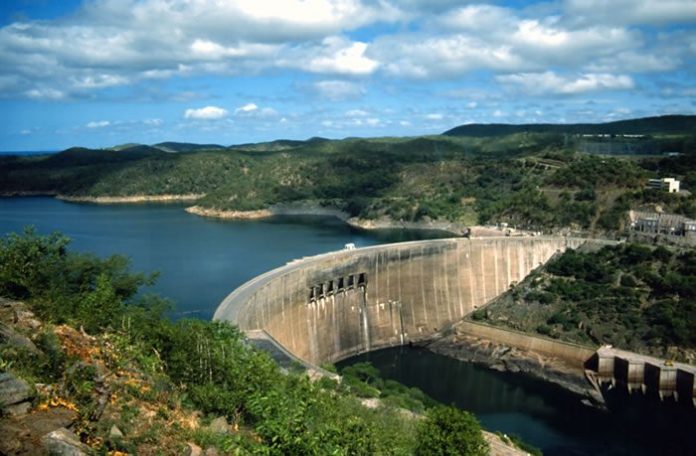A 1,000-megawatt floating solar plant estimated to cost close to $1 billion is being considered by China Energy Engineering Corp., to be constructed on Zimbabwe’s Kariba dam. As Zimbabwe moves toward a greener future, this large-scale project is anticipated to provide the region with clean, renewable energy.
The projected solar farm would be one of the biggest in the world and the largest of its kind in Africa. It would be bigger than some cities in Zimbabwe, with a land area of more than 2,500 hectares. Up to two million households could receive power from the solar megaproject.
China Energy is dedicated to supplying developing countries with renewable energy options. The floating solar plant project is a part of that initiative. They have invested heavily in this project as well as others involving renewable energy.
The floating solar plant will be established on Lake Kariba. The lake lies between Zambia and Zimbabwe. Due to its size and relatively calm waters, it offers a perfect location for this kind of project.
How long will it take to complete the floating solar plant project?
The project is expected to take three years to complete. Thousands of jobs are expected to be created throughout the construction and operating phases. It will also help reduce carbon emissions by substituting green energy sources, such as solar power, for traditional sources of electricity.
This project could benefit Zimbabwe by offering clean energy options. It could also support other countries in the area by giving them access to dependable electricity sources at reasonable costs. When more people have access to affordable, reliable, and sustainable power sources, this could promote economic growth across all of Africa.
The proposal by China Energy to build a 1,000-megawatt floating solar facility in Zimbabwe is an exciting development. The project could provide the region with much-needed renewable energy solutions while also generating jobs and reducing carbon emissions. If accomplished, this project could serve as a model for other countries in their pursuit of renewable energy sources as they work toward a greener future for all people in Africa and beyond.
Project Overview
In 1955, a decision was made to transform the Zambezi River at the Kariba Gorge into a dam. The project was an effort to supply power to both Zambia and Zimbabwe. In 1956, engineers began to mine a vast cavern, about 174 meters below the ground that would be able to host a power station.
Thereafter, in 1959, the very first generator was put in place. By 1962, the project’s 6 generators were fully operational with a capacity of 666 MW. Following an update to the station to 125 MW per unit, the project’s total installed capacity rose to 750 MW.
Fast forward to 2014, the Zimbabwe Power Company (ZPC) added two more units that have a total generation capacity of 300 MW. Finally, in March 2018, the project was completed as well as commissioned.
The Kariba South Power Station stands as the biggest power generation plant in Zimbabwe with a total generation capacity of 1050 MW.
Reported On Sep 22, 2014
US$ 533m Kariba power project in Zimbabwe kicks off
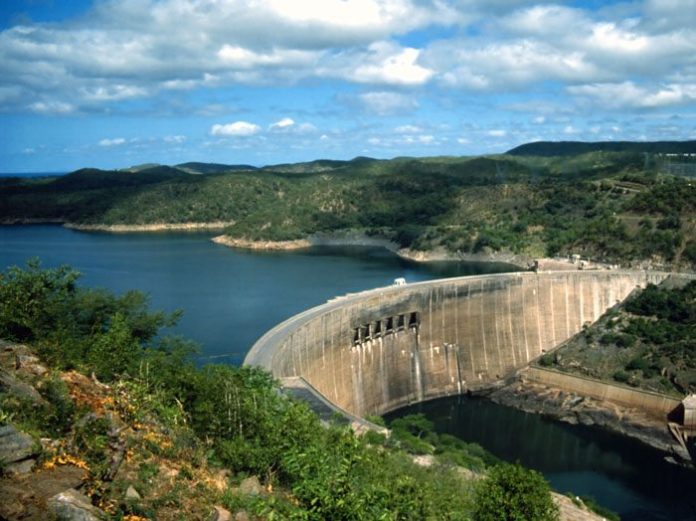
Kariba dam in Zimbabwe: the new construction works will include the addition of two 150MW power generating units. The Kariba power project in Zimbabwe kicks off officially with President Mugabe’s commissioning on the 4th of September; the project is approximately US$533 million and will potentially generate an additional 300MW by 2017.
Speaking soon after the groundbreaking ceremony, President Mugabe said he was happy that the Kariba power project had begun to take shape. The project had been on the cards for years, with its implementation hampered by the shortage of foreign currency, among other obstacles.
Mugabe also added that the project will see through the addition of generation capacity from 750MW to 1050MW. The construction works for the Kariba power project involve adding two 150MW power-generating units. The current dam has six 125MW generating units.
The Chinese government has already extended to the country, a US$320 m loan for the construction of the dam. A further US$213 m from Development Finance Institutions to for additional funding. This fund is provided through the Zimbabwe Power Company.
Zimbabwe has launched an initiative to seek additional funds from China for the development of infrastructure and utilities. Energy and power development is a key enabler to productivity and socio-economic development.
The country has been for a while now experiencing challenges largely due to obsolete generation equipment and infrastructure as well as inadequate financing and capitalization and other structural bottlenecks. The dam will be constructed by a Chinese firm, Sino Hydro.
Reported On Oct 21, 2014
Kariba Power Project In Zimbabwe Kicks Off
The Kariba power project in Zimbabwe kicked off officially with President Mugabe’s commissioning on the 4th of September; the project’s cost is approximately US$533 million and aims to generate an additional 300MW by 2017.
Speaking soon after the groundbreaking ceremony, President Mugabe said he was happy that the Kariba Power project is taking shape. The project had been on the cards for years, with its implementation hampered by the shortage of foreign currency, among other obstacles.
Mugabe also added that the project will see through the addition of generation capacity from 750MW to 1050MW. The construction works for the Kariba Power project involve adding two 150MW power-generating units. The current dam has six 125MW generating units.
The Chinese government has already extended to the country, a US$320 m loan for the construction of the dam. A further US$213 m has been given as a loan from Development Finance Institutions to fund the same project. This provision of funding for the project is through the Zimbabwe Power Company.
The country has been for a while now experiencing challenges largely due to obsolete generation equipment and infrastructure as well as inadequate financing and capitalization and other structural bottlenecks.
There were earlier announcements that the Tokwe-Mukosi dam would undergo reconstruction.
Reported On Nov 30, 2016
Zimbabwe’s Kariba South hydropower station project is 60% complete
The US$533m Kariba South hydropower expansion project being undertaken by China’s Sino-Hydro is 60% complete. The project will start feeding into the national grid by December 2017.
The Secretary for Energy and Power Development Mr. P. Mbiriri said, ‘ To date, all underground excavations have been complete, except for the removal of intakes and out-fall temporary protection coffer-dams, which is currently in progress.
Electro-mechanical works are 50 percent complete and some of the major equipment installations are already at the site, including the powerhouse, two 250–tonne cranes, draft tubes stay rings, and unit seven spiral casing, constituting the generating components.
Equipment in transit from manufacturers in China includes generator transformers, shunt reactors, intake gantry cranes, and turbine generator components.’
Reported On Dec 19, 2016
Kariba South Hydropower station to save Zimbabwe millions
Falling levels in the Zambezi river put the spotlight on the need to import power for Zimbabwe because the Zambezi River Authority had to ration water allocation to power generation. Zimbabwe imports 300 MW of power from Eskom (South Africa) each month, at a cost of US$0,14/kWh.
Daily national consumption of power is approximately 1 400 MW in summer and 1800 MW in winter. The average daily national power generation capacity sits at 956 MW, creating a power deficit for the nation. The US$ 533 million Kariba South expansion project strives to substitute the need to import power.
The Zimbabwe Electricity Supply Authority is currently prepaying US$ 6,5 million per month for imports from Eskom and Hydro Cahorra Bassa of Mozambique. This translates to US$78 million annually. If the Kariba South Hydro Power Station is a successful addition to the national grid, the 300 MW potential from the expansion will save the power utility the huge import bill.
The Kariba South expansion project is potentially starting to feed power into the grid by December 2017. The project which is 60% complete is being undertaken by China’s Sino Hydro. All underground excavations have been done, except for the removal of intakes and outfall temporary protection coffer dams, which is currently in progress.
Reported On Jun 29, 2017
Kariba south project to be effective before the end of 2017
About 86% of work on the Kariba South Power expansion project that was first made official in 2014 has been completed Sinohydro chief representative in Zimbabwe, Wu Yifeng has said. Mr. Wu says that the first unit is should begin generating 150MW by December. The second one will feed 150MW into the national grid after commissioning by March next year.
The Completion of this power scheme will see the country make huge savings on power imports. One of the key enablers in the economic recovery drive is a power supply with little to no interruptions.
The first unit is about to reach completion. Moreover, it aims to start generating 150MW in December. The second unit will be commissioned in March 2018. This means that the Kariba South expansion project will have an additional 300MW to the national grid by March next year.
Zimbabwe needs about 1400 MW for domestic and industrial use against a generating capacity of 900 MW, the remaining balance is left to be covered by imports.
Mr. Wu dismissed claims from the media that the African Development Bank had blacklisted Sinohydro from carrying out its sponsored projects. In fact, Mr. Wu said that there was a meeting between Sinohydro and AfDB, where both parties made a consensus that Sinohydro would continue to participate in AfDB’s sponsored projects.
There were other claims that Sinohydro charged $533M for the expansion of the Kariba South project in comparison to what Zambia was charged for the Kariba North expansion. Truth is, the procurement, construction, and engineering contract for the Kariba South expansion project are only $355M and not the said $533M.
The difference is brought about by the money that the employer; the Zimbabwe Power Company, spends on securing bank loans and paying consultancy firms. That money has totally nothing to do with Sinohydro.
Zambia’s project was $278M Zimbabwe’s is $355 million. This is because of the differences in, the date when the contract was made official, construction duration, and scope of works. Mr. Wu said.
He also said that Sinohydro was contributing to the development of the Kariba community through its corporate social responsibility activities. About 1 100 local laborers and technicians got employment and training for the Kariba South expansion project.
When the Kariba South expansion project reaches completion, the annual power generation of the country will be improved by about 25%. This will largely reduce the deficiency in domestic and industrial power use as well as further boost the social and economic development of Zimbabwe.
Reported On Aug 4, 2017
Kariba South Extension project is 91% complete
The $533m Kariba South extension project began in November 2014. The dam is expected to add 300MW to the national grid upon completion. According to the permanent secretary Mbiriri, the first part of the project has been completed. He also added that work is at about 91% complete.
He also said water levels in Kariba had shored up. This is a good thing since the Kariba hydro plant will be in use during peak hours. According to him, this is to enable a steady water supply as the water levels have not gone up of late. He also quelled those saying the installation of an additional 300 megawatts is not wise. This means operations will run during morning and evening peak hours.
He said hydropower was convenient since it takes less time to generate power than thermal power, which takes a couple of days. The 300MW will add to the 750-megawatt power plant power station. It will also bridge the huge power deficit between demand and power supply in the country.
The country is currently importing power from South Africa’s Eskom and Mozambique’s HCB to cover for the power shortfall. Zimbabwe is battling to generate 1 400MW required during peak hours.
Presently, the country generates about 1 000MW.
Contractor
Sino Hydro won the contract to construct the Kariba South extension power station. This is at an engineering, procurement, and construction cost of $354m. There are also other expenses such as consultants, and equity contributions. Others include interest and statutory costs will see the total cost rise to $533m.
Reported On Sep 13, 2017
Kariba South Extension Project to boost Zimbabwe’s power grid
In Zimbabwe, the energy and power development Minister, Dr. Samuel Undenge, has made a confirmation that work on the Kariba South Extension Project is progressing well.
“We are happy with the progress and we know that the Kariba South Extension Project is now 92% complete. Everything is on course for its commissioning on 24 December 2017,” Undenge said.
“We appreciate the work and effort that the contractor is doing (Sinohydro) and Zesa management,” he further added.
In 1997, the hydro plant underwent refurbishment. The upgrades have enabled the plant to increase its generation capacity to 750MW.
Kariba South Extension Project challenges
The minister said that the initial challenges of foreign currency to pay suppliers were dealt with through the involvement of the Reserve Bank of Zimbabwe.
On completion, two new units are going to add a further 300MW to the national grid. Zimbabwe struggles with a daily deficit of between 300MW and 600MW.
More than 300MW of power is majorly imported to offset the supply deficit. Furthermore, there are a number of projects underway to boost supply.
The minister of finance and economic development, Patrick Chinamasa, is currently working on incentives. This aims at making the investment into the energy sector attractive.
“Chinamasa is trying to come up with a regime of incentives so that we make an investment into the energy sector by private players more attractive. We need them to develop what the government is doing,” minister Undenge said.
Reported On Sep 29, 2017
Kariba South Project in Zimbabwe nears completion
The Kariba South extension project is going to start feeding 150 MW into the national grid before the end of the year. The commissioning of the project is going to happen in the second week of December. Construction work on the whole project is 92% complete.
Reported On Oct 19, 2017
Kariba South Project to add 150MW to Zimbabwe power grid
Reported On Oct 24, 2017
Kariba South Extension Project
The Kariba South Extension project in Zimbabwe is on course for completion in 2018. The project which was initiated by the Zimbabwe Power Company (ZPC) due to an acute power shortfall in the country, is currently 85% complete.
The project will inject two 150 MW units at Kariba South Power Station and two 300 MW units at Hwange Power Station. This is to meet the peak power demand of 2 200 MW. Presently, the country depends on the available capacity of only 1 500 MW.
Hatch began working on the Kariba South Extension Project in 2011, with a comprehensive review of all documentation and study material to date. The Kariba South Extension Project features four distinct phases. Phase 1 involved project inception and review. Procurement made up Phase 2. Additionally, in order to produce a tender document, the project issued an Expression of Interest.
Phase 4 involves commissioning and handover, then a two-year warranty period. Project Manager Geoffrey Lee points out that presently, Hatch is responsible for design reviews of the equipment. According to Global Director Marie-Hélène Briand, the project demands close monitoring and focus. It is also Zimbabwe’s largest infrastructure since its independence.
Successful project
The project is one of Hatch’s most notable projects in its 85-year history of hydropower projects. Hatch also has a strong presence in China and is able to carry out in-factory quality inspections of all equipment, post-manufacturing. The bulk of the equipment for the project came from China. This is inclusive of the turbo-generators and the balance of the plant.
Dec 2017
Zimbabwean President to Commission Kariba South Power Project’s first unit
Zimbabwean President Emmerson Mnangagwa is set to commission the Kariba South power expansion project’s first unit on 24th December 2017. The unit will feed 150MW onto the national grid.
The project has been undertaken by the Chinese state-owned hydro-power engineering and construction company, Sinohydro. It began in September 2014, as part of Zim-Asset, under the Infrastructure and Utilities Cluster, with the aim of increasing power generation by 300MW. Zesa Holdings chief executive Mr. Josh Chifamba yesterday confirmed that the first unit was coming online next week.
“There are concerns over the water levels in Lake Kariba. Therefore, we would not get the full benefits of the project until the water level improves,” he said. The second unit will generate another 150MW to be fed into the national grid by end of March next year.
The Kariba South expansion project will ease pressure on the national power utility Zesa. Currently, Zesa is importing about 350MW from Zimbabwe’s neighbors. The completion of the power project will see the country making colossal savings on power imports.
March 2018
ZPC to complete Kariba extension soon
The Zimbabwe Power Company (ZPC) has begun a busy seven-day test run for unit number 8 of the Kariba South, the second generator in the extension project.
The main aim of the exercise is to test the performance and functionality of the 8th unit. This comes after the extension project was undertaken at a cost of US $533m. The two, units 7 and 8 will contribute an additional 300MW to the national grid to add to the 750MW of the original six.
According to ZPC Acting Managing Director, Engineer Joshua Chirikutsi, the project is 98% complete and will be complete by 10th March this year. Before commissioning and being declared commercially available, Unit 8 will also undergo a compulsory seven-day test to monitor its performance.
April 2018
Zimbabwe adds 300MW to the national power grid
Zimbabwe has added 300MW to its national power grid. President Emmerson Mnangagwa flagged off two generators from China’s Sinohydro Corp that will produce 150MW each at Kariba, the country’s largest hydropower plant 360 km North of the capital Harare.
April 2020
Water levels continue to rise at Kariba dam in Southern Africa
The water level at Kariba dam has continued rising steadily. It closed the period under review at 478.87m (23.68% usable storage) on 20th April 2020. Last year on the same date, the Lake level was higher at 480.43m (35.03% usable storage).
The continued increase in water levels brings a ray of hope to power-struggling Zambia and Zimbabwe, who are currently failing to generate enough electricity due to the decrease in water levels at Kariba Dam. Because of the 2018/19 drought, water levels at Kariba Dam dropped by over three meters, leaving the Zambezi River Authority (ZRA) with no option but to reduce water volumes for Zambia and Zimbabwe’s hydropower generation, on which the two countries depend on for electricity.
Also Read: Zimbabwe imports 300MW of electricity from regional power pool
The world’s biggest man-made reservoir
Zimbabwe and Zambia rely on Kariba dam, the world’s biggest man-made reservoir for most of their electricity supply, but were last year forced to cut back power generation from the dam as water levels fell drastically. The water levels at Kariba are mainly influenced by inflows into Lake Kariba from the Zambezi River and its tributaries located in the Kariba catchment.
Last May, Zimbabwe was forced to introduce 18-hour daily power cuts and struggled to import electricity from neighboring countries to plug the shortfall. At the end of March this year, the flows on the Zambezi River recorded in Victoria
Falls were 54% above the long-term average and way higher than last year’s flows during the same period. But even with more water, the Zambezi River Authority said it would limit Zimbabwe and Zambia’s electricity generating capacity to 275MW each for now in an effort to ensure the build-up of the reservoir storage.
Zimbabwe has installed an electricity generating capacity of 1,050MW in Kariba. Power cuts hit the country’s struggling economy hard as companies lost production time while others had to invest in alternative sources of fuel.
Reported On May 5, 2020
Zimbabwe Power Company commissions Kariba South Expansion Cranes
The Zimbabwe Power Company (ZPC) recently brought forth, overhead traveling cranes in the powerhouse of the new 300 megawatts (MW) Kariba South Expansion plant which is under constriction 130 meters in the belly of the Kariba South bank.
Upon completion of the expansion, the Kariba South Power Station will add 300MW to the national grid. The US$533 million expansion project, which is inclusive of development costs to be met by ZPC, is being done by a Chinese firm, Sino Hydro. The project aims for completion by 2018.
According to information from the ZPC, the cranes began operations on May 1, 2016, and will have a cumulative operation capacity totaling 500 tonnes, making it the biggest crane to ever installation in the country. The heaviest part is a 490-tonne generator rotor.
Construction progress is currently at 45% towards completion and the ZPC is optimistic that the commissioning of the two overhead cranes is a significant step towards achieving its set target of adding the first 150MW generating unit into the national grid by December 24, 2017.
According to ZPC, the remaining unit is aimed to come to life on March 10, 2018.
Designed by JME, a Chinese architectural firm sub-contracted by Sino Hydro, the Engineering Procurement and Construction (EPC) contractor, the 217-meter span overhead moving cranes have a lifting height of 28m and will be for use as special lifting equipment during installation of the new generating units. The cranes will however undergo preservation after the commissioning of units seven and eight to be that will be for future rehabilitation and maintenance work.
The process of manufacturing the crane began at JME’s factory in China in 2015. In September of the same year, ZPC and its project technical consultants. The cranes at the factory underwent acceptance tests after a month of attending to issues of quality; the manufacturer then shipped the crane parts to the country. The final parts arrived in Kariba on February 29, 2016, ZPC.
Meanwhile, more manufacturing works on the generator and turbine components are taking place in China, and strive to be in the country at the end of this year.
Reported On Aug 15, 2021
Zimbabwe to engage Eskom on Kariba Dam hydroelectric power project
The supplies will be during off-peak periods and will allow Zimbabwe to shut off and conserve water at Kariba Dam.
Kariba dam
Kariba dam stands at stands 128 meters (420 ft) tall and 579 meters (1,900 ft) long. The dam forms Lake Kariba which extends for 280 kilometers (170 mi) and holds 185 cubic kilometers (150,000,000 acre•ft) of water. Two views of the dam as seen from Zimbabwe.
Rehabilitation works began in 2014 after cracks were seen on its walls. Experts said that Africa’s largest man-made lake, which measures 226 kilometers long and in some places 40 kilometers wide, would collapse without repairing
Rehabilitation works on the project include; the reshaping of the plunge pool downstream of the dam wall, which commenced in 2017, and the rehabilitation of the spillway. The spillway consists of six gates in the upper part of the concrete dam wall through which the ZRA releases water into the plunge pool to manage the reservoir water levels.
According to Engineer Munyaradzi Munodawafa, CEO of the Zambezi River Authority, spillway rehabilitation will ensure the safe, release of water from the reservoir. It will restore the Kariba Dam to full operability and ensure its further contribution to energy security and economic growth, prosperity, and poverty alleviation in the southern African region.
Reported On Nov 30, 2022
Kariba Dam Rehabilitation Project (KDRP) Updates
Part of the work on the Kariba Dam Rehabilitation Project (KDRP) involves the use of a crane on the dam wall which will lower the cofferdam pieces into place one by one. Pratley Putty is playing a key role in the rehabilitation of the Kariba Dam spillway. The hand-mouldable, high-performance putty-like adhesive was by distributor Mart Solutions.
The Zambezi River Authority (ZRA) says that work on the Kariba Dam Rehabilitation Project (KDRP), which includes efforts to reconfigure the plunge pool and rebuild the spillway gates, is underway. The KDRP has been in operation since 2017 and aims for completion in 2025.
Also Read: Ziminya dam project for Matabeleland in Zimbabwe
Since its start, the project’s goal has been to guarantee the structural integrity of the Kariba Dam, therefore assuring the sustained generation of power primarily for the benefit of the inhabitants of Zimbabwe and Zambia and the broader Southern African Development Community area.
The work on redesigning the plunge pool, which involves bulk excavating the rock in the current pool to assist plunge pool stabilization and avoid additional scouring or erosion along the weak fault zone towards the dam foundation, is moving well. The reshaping work will be through constructing a temporary water-tight cofferdam.
Work on the spillway
A crane on the dam wall will lower the cofferdam pieces into place one by one. The water trapped between the cofferdam and the dam wall will have a ‘pumping out’ channel into the lake, creating the water-free space necessary for the refurbishment work.
Finally, a new self-motor gantry crane installation will place the emergency gate in position to close any of the sluice gates as required. The implementation of the spillway will rise after the six sluice gates refurbishment as well as installation.
Despite minor implementation delays, particularly due to unforeseen geological complications, this project, which began in May 2017, is on track for completion by the end of 2024, with construction presently 60% complete.
The ZRA adds that its spillway restoration project is likewise on track. These works intend to replace secondary concrete and built-in components of the stop beams’ upstream guide slots and ensure free movement of the electromechanical equipment used to restrict the flow of water from the dam’s upstream face.
Progress of the Kariba Dam Project
This Kariba dam project, which began in November 2019 is a result of a collaboration that includes GE Hydro and Freyssinet International. Meanwhile, the authority adds that, while consistent steps to reduce the effects of Covid-19 on the KDRP have been taken, the project is facing challenges due to detrimental implications to site arrangements, offshore supplies, and logistics.
Furthermore, the ZRA alleges that the owner and owner’s engineer failed to timely witness the factory acceptance tests (FATs) and vendor quality surveillance (VQS) for the KDRP’s equipment before such equipment’s authorization, then sent to the project site.
Furthermore, the presence of the Covid-19 epidemic resulted in tighter border crossing restrictions, causing traffic congestion that hampered the project slowing the timely supply of project equipment. These interruptions caused time and expense overruns compared to the project’s baseline schedule and budget.
To address these issues, the ZRA notes that the project owner has remained resilient in creating relevant mitigation measures, such as program enhancement through night shifts, with the help of stakeholders. According to the ZRA, the owner’s engineer’s participation in FATs and VQS and faster Covid-19 immunization and testing for KDRP site employees have been essential in re-aligning the project to its execution plan.
